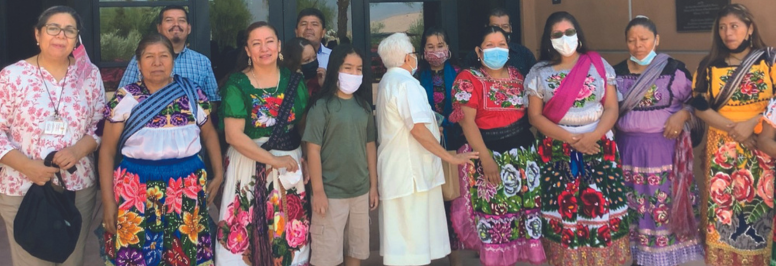By Petra Alexander
In the month of March, we celebrated Cesar Chavez Day, and while it was a time to recognize that Cesar Chavez was an ethical figure who stood for the rights of the farmworkers, it was also a time to remember that there were many women who joined in the fight for recognition in the form of a fair salary, justice and rights.
In the state of California, before the pandemic, the statistics showed that approximately one third of field workers were women, however, this number is increasing. Speaking with Hilda Zamora, manager of the teams of workers in the Mecca area of the Coachella Valley, she mentioned that out of approximately 50 workers about 20 to 25 are women.
I ask Hilda to describe the workday schedule and she responds: “We women go out into the fields before 5 am with our lunch. If we are in a season of high heat, we need to carry with us enough water to withstand temperatures between 115 and 120 degrees.”
Hilda tells us that the average age of women in the fields varies between 20 and 50 years old. She began picking in the fields when she was young, and she says, “picking different products is an art. You need to understand how to take care of yourself, wearing clothes that will protect you from the sun, from the chemicals, from the thorns and the snakes. You need to protect your eyes from the branches of the trees and from the chemicals, protect your body from positions that tire you out when you are on your knees, choose hats that are fresh and will provide shade and so many things.”
Hilda’s eyes have become strong to be able to focus on a wide space where the rows of teams she supervises work. Like a new mother, she carefully watches over them, she can see who looks more tired, who is coming in and who is leaving from one schedule to the next. I ask her in what way she thinks work in the fields has changed for women. “Before there were hardly any female managers, or women in her position. Now, many women also operate machinery: tractors, belt machines for sowing and harvesting, forklifts. More women are getting certified and performing jobs that before only men did.”
I ask Hilda how many crops she is familiar with, and which are the jobs that are the most difficult for women. She smiles and tells me a bit. “I know from experience the processes required for about 16 crops, from the “beds” the baby plants, the whole process and how to harvest them. Some are very difficult like the bell pepper, because it develops in the time when it is very hot, but for me the most difficult are the citrus harvests. You need to go up and down a ladder with speed, some lemon trees have thorns, and you need to fill several baskets to make a salary, and even though you use gloves, your hands and arms get very sore.”
I ask Hilda if she can offer some words about the dreams of the women who work our Valley. She smiles. “We women always have dreams because following the fruits of the earth leads us to think about our own goals. The first is family, you know, with the salary of the husband it is not enough to pay the rent or the expenses of a family. Lately, there has not been a lot of work and they do not offer much overtime so even though women may earn a good salary in Coachella Valley, the cost of living is so high that you don’t achieve much. We have the dream of helping our families back in our native country. We dream of schooling and education for our children. When you earn a salary it is not only to survive, but also to share in the joy of the community by participating in retreats, novenas and feasts like that of Our Lady. For us women, it is a great satisfaction to be able to contribute to these celebrations.”
To see Hilda, as an active member in the ministry group of the Sanctuary [of Our Lady of Guadalupe], wearing the festive clothes of the Purépecha women makes me remember the words of Cesar Chavez: “We cannot be free, if we cannot liberate our women.”
Petra Alexander is the Director of Hispanic Affairs for the Diocese of San Bernardino.


